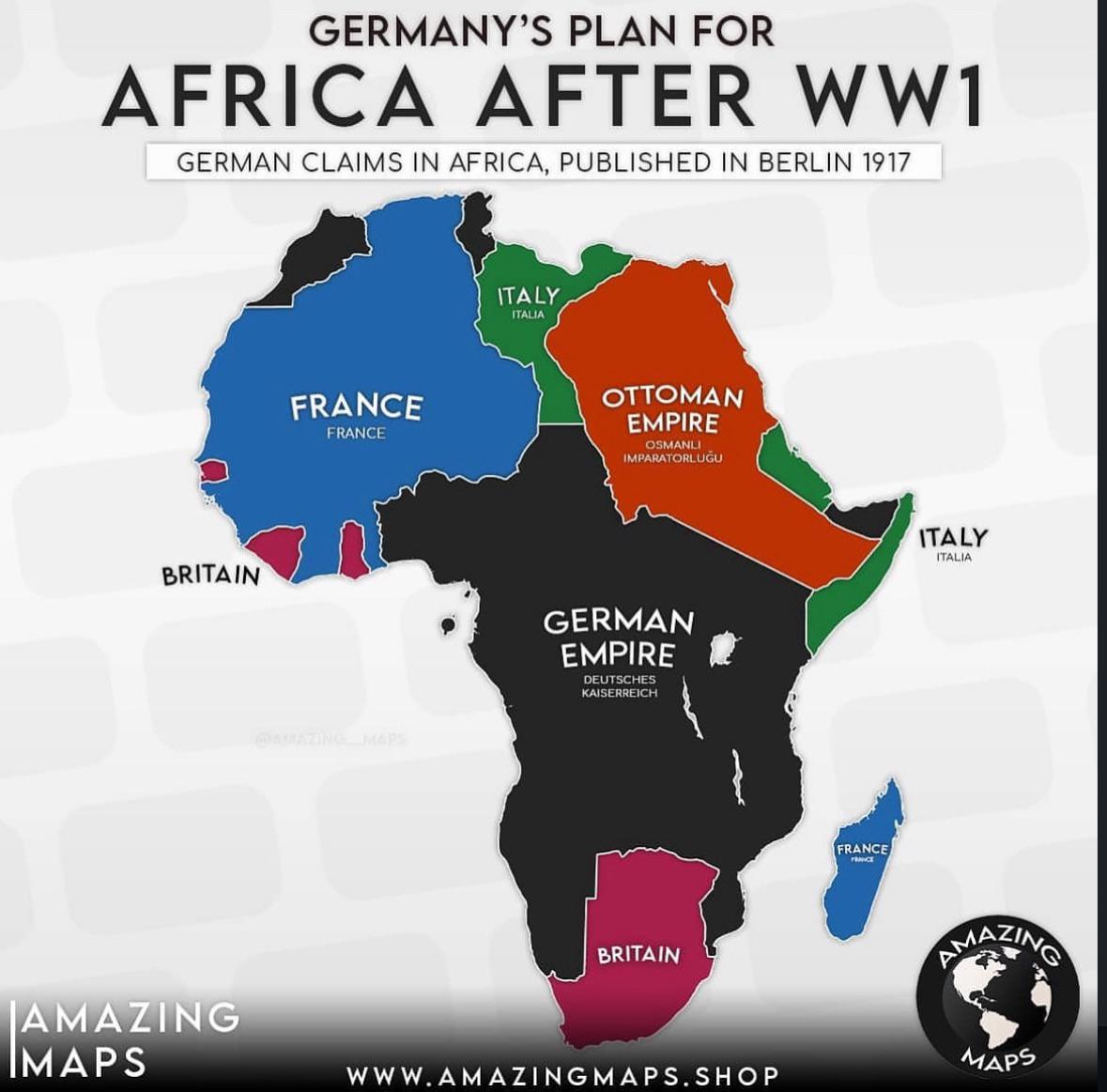German Colonial Plans for Africa After WW1 Map


Alex Cartwright
Senior Cartographer & GIS Specialist
Alex Cartwright is a renowned cartographer and geographic information systems specialist with over 15 years of experience in spatial analysis and data...
Geographic Analysis
What This Map Shows
The map titled "German Colonial Plans for Africa After WW1" provides a visual representation of the territories that Germany sought to control in Africa following the conclusion of World War I. This period marked a significant turning point, as the Treaty of Versailles imposed heavy restrictions on Germany, leading them to consider alternative strategies for expansion and influence. The map outlines proposed territorial acquisitions, showcasing ambitions in regions that had previously been under German colonial rule, as well as areas perceived as ripe for future colonization.
Transitioning from the map's visual appeal, it's essential to delve into the historical context and implications of these territorial ambitions. The aftermath of WW1 was not just a time of loss and reparations for Germany, but also an era of recalibration regarding its colonial aspirations, particularly in Africa.
Deep Dive into German Colonial Ambitions in Africa
The late 19th and early 20th centuries were characterized by a fierce scramble for Africa among European powers. Germany, a relatively latecomer to the colonial race, established several colonies during this period, including present-day Namibia (then German South West Africa), Cameroon, Togo, and parts of Tanzania (then German East Africa). These territories were rich in resources and strategically significant, making them valuable assets for the emerging European powers.
However, the defeat in World War I drastically curtailed Germany's colonial ambitions. The Treaty of Versailles (1919) dictated that Germany relinquish all its overseas colonies, leading to a significant loss of economic resources and national pride. Interestingly, this map highlights proposed areas where German influence could be reestablished or expanded post-war, reflecting a blend of nostalgia and strategic foresight.
The map reveals not only the former colonies but also regions where Germany aimed to extend its reach—like parts of the Portuguese territories and the British-controlled areas. This ambition was driven by various factors, including economic motivations, the desire for geopolitical power, and a lingering sense of German nationalism.
From a geographical perspective, these territories were not merely lines on a map; they were land with diverse climates, ecosystems, and populations. For instance, German East Africa was known for its fertile highlands and abundant wildlife, which presented opportunities for agricultural development and tourism. The possibility of re-establishing control over these areas underscores the complexity of post-colonial dynamics and the lingering impact of imperialism in Africa.
Regional Analysis
Examining the regions outlined in the map offers a nuanced understanding of German intentions and the realities of colonial administration. For example, German South West Africa was a prime candidate for resettlement and agricultural exploitation due to its arable lands and mineral wealth. However, the indigenous populations faced oppression and displacement, creating an undercurrent of conflict that would resonate throughout the colonial period.
Conversely, areas like Cameroon and Togo had a more established German presence before the war, which made them focal points in the post-war discussions about re-establishing authority. Namibia, with its rich natural resources, was particularly significant. The map's indication of potential German expansion into neighboring territories reflects a strategic attempt to bolster economic resources that were lost after the war.
Interestingly, the repercussions of these ambitions were felt well beyond the borders of German interests. Neighboring powers, especially Britain and France, were keenly aware of Germany's renewed aspirations and took measures to counteract this potential resurgence. This led to increased tensions and a complex interplay of colonial politics in Africa during the interwar years.
Significance and Impact
The topic of German colonial ambitions in Africa post-WW1 is not merely historical; it reflects broader themes of imperialism, nationalism, and the geopolitics of resource allocation. Understanding this historical context helps illuminate current geopolitical tensions and the legacy of colonialism that still affects Africa today.
Moreover, the ambitions represented in this map underscore the long-term impacts of colonial policies on local populations, economies, and ecosystems. Have you noticed how historical narratives often shape contemporary views on land ownership and governance in Africa? The scars of colonialism are still evident in many regions, influencing everything from economic disparities to cultural identities.
As we look toward the future, it's crucial to consider how these historical patterns influence current international relations and economic strategies in Africa. With global attention shifting toward sustainable development and equitable resource distribution, the lessons learned from the past can guide more mindful approaches going forward. The map serves as a reminder of the complexities of colonial legacies and the importance of understanding history in shaping the future.
Visualization Details
- Published
- August 15, 2025
- Views
- 218
Comments
Loading comments...